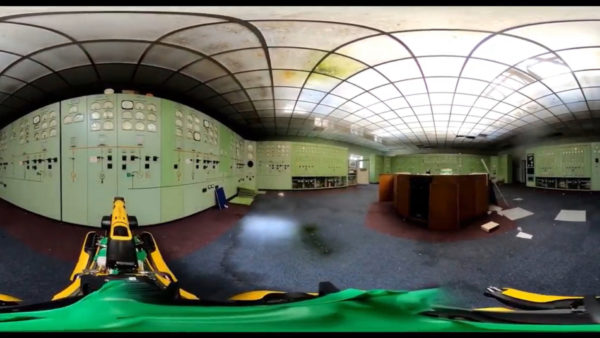Mace is rolling out the AI-based project monitoring tool Disperse across its business. Paul Connolly, director of technical services at the major contractor, and Felix Neufeld, founder and CEO of Disperse, explain how it has boosted construction efficiency and lightened the burden on project planners.
What is Disperse?
FN: Disperse is an artificial intelligence-powered issue detection system. 360-degree images taken of every room across all floors of a project each week are processed using computer vision technology to detect changes, measure progress and identify anomalies.
Where has Mace used it so far?
PC: We started with a trial on 145 City Road, a 40-storey skyscraper in London, and since then we have integrated it into multiple projects, predominantly residential. There’s now a drive to roll this out at scale for use across our construction, consultancy and development businesses.
How do you use the system in practice?
PC: Once a week, the project team is issued with a report containing 360 photography linked to project drawings and programme information in Asta Powerproject software. We use this in project and progress meetings to measure performance against programme and to track key issues.

The beauty of our solution is it objectively and holistically measures everything, which takes human subjectivity out of the process.– Felix Neufeld, Disperse
The system issues “Spotlights” that highlight everything we’ve missed on the programme, which can be filtered either package by package or trade by trade, so there’s no hiding when something is not achieved. One clever aspect is Disperse takes our updated drawings and checks them against the photography to automatically recognise any changes that haven’t been picked up.
What are the main benefits to cost or time?
PC: Traditionally a planner would create a programme and then regularly walk the site to assess progress against it. Now we are using Disperse to carry out that assessment instead. It frees up our planners to either go on to other projects or be more efficient in their jobs.
The 360 images, linked to programme information, show us how far work has progressed and in meetings if trades claim they have finished work, we have an accurate record to check. Staff and trades become more efficient because they know they’re being monitored by an intelligent system and the weekly Spotlight reports prove what work has or had not been completed.
The tool is great as a quality tool, for example we have used it to check that we’ve got the right number of sockets on walls and that fire stopping is completed. Post-Grenfell everything needs to be recorded and this solution gives us great evidence. It can support our bid work. If I was going in for a bid now I would use Disperse to prove that a previous programme was achieved.
Is Disperse 100% AI, or is there human input?
FN: It’s a hybrid. Computer vision and machine learning “pre-processes” the data to align every image with the right location within the building, then analyses every single aspect of the building to identify and classify incremental changes. This process is augmented with input from human operators to create 100% reliable outputs for customers.
Has it helped identify any common issues across projects that might previously have been missed?
PC: Storage of products and materials can be an issue on residential projects. Items like washing machines might get put into an apartment when they aren’t immediately needed and therefore have to be moved around several times during work, which is inefficient and not lean. We have used Disperse in meetings to monitor that and discuss how to manage it better.
FN: In construction there is rarely a clear pattern to work, which makes it so hard to ensure that projects don’t derail. Over time, an experienced construction manager or project manager can get a sense of things that have gone wrong in the past on projects and try not to make those mistakes again.

Traditionally a planner would create a programme and then regularly walk the site to assess progress against it. Now we are using Disperse to carry out that assessment instead.– Paul Connolly, Mace
The beauty of our solution is it objectively and holistically measures everything, which takes human subjectivity out of the process. Rather than looking at things through the lens of an individual and their past experience of what can or cannot go wrong, it takes in everything and compares it to what should have been done.
Does the system utilise Internet of Things data harvested from sensors on site?
FN: Not at the moment, Disperse is based on visual capture, 95% of construction work can be assessed visually. However, we are looking to partner with other companies to add new data sources into the system.
Any plans to integrate this into BIM software?
FN: We are Beta-testing integrations with full BIM models. However, rather than push customers into an entirely digital way of working we want to incrementally help them increase value and reduce overheads on site. Holistic 4D and 5D models are where we will end up as an industry, but the way to get there is by gradually adding and advanced models from traditional ways of working, rather than going from one extreme to the other.
Disperse recently raised $15m (£11.65m) in funding to expand in the US. Has that allowed you to invest in the technology?
FN: Since taking on that investment we have tripled our engineering team and doubled our computer vision team. We don’t see ourselves as the “one” organisation that will transform the industry, our role is to support pioneering contractors like Mace in transforming the industry.
Is Mace using other AI systems on sites?
PC: We use Disperse to monitor projects internally and another platform to monitor the facades and structure, then align the two to keep tabs on overall progress.
Is AI the future of construction?
PC: I don’t know if that’s true, but in a world where efficiency on projects is being scrutinised, Disperse is an ideal tool to show where we were last week, and where we are now. That is a very powerful thing.
Main image: 360-degree images are processed using computer vision technology to detect changes, measure progress and identify anomalies.
Comments
Comments are closed.














Which camera are you using to capture the images please and how long does the photo capturing process take each week?